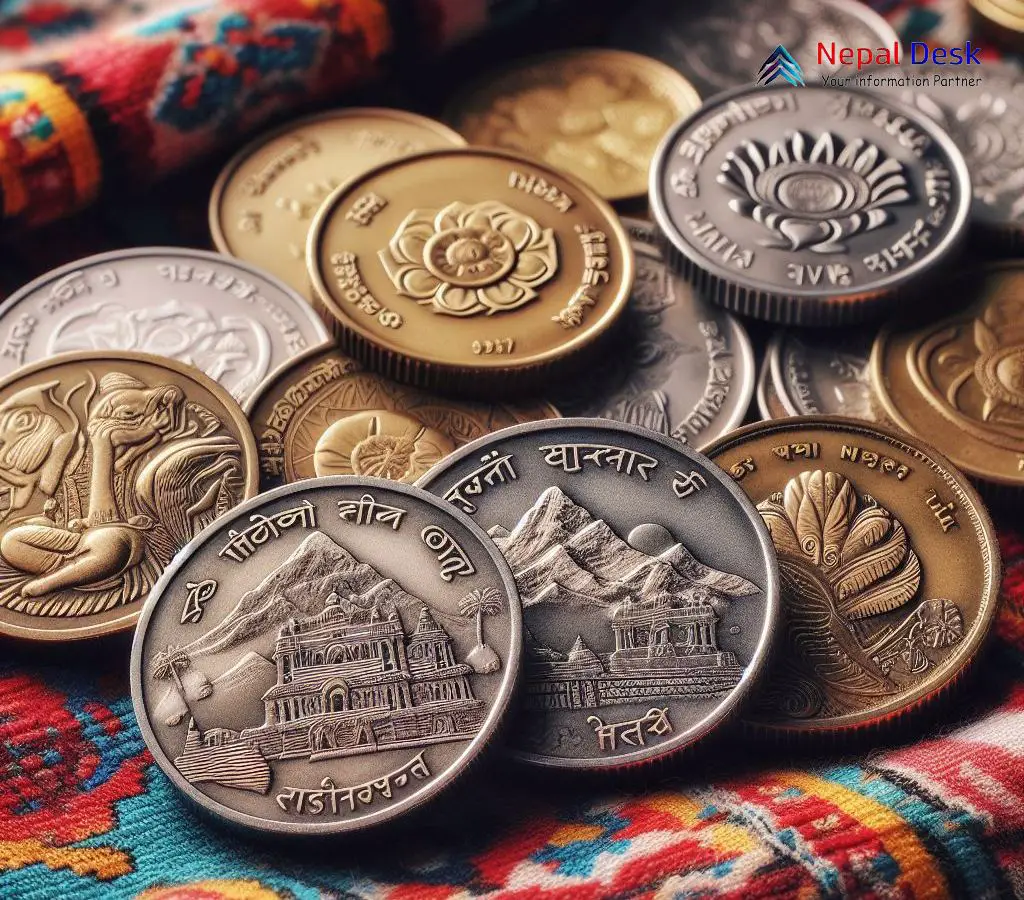NRB Unveils Plan for Province-Specific Commemorative Coins
Published Date

Published Date
Nepal Rastra Bank initiates the issuance of commemorative coins representing all seven provinces, celebrating cultural and historical heritage.
⏱ 3 min read
Nepal Rastra Bank (NRB) has initiated a plan to issue commemorative coins representing all seven provinces, each valued at up to Rs 4,000. Thaneshwor Acharya, Head of the Mint Division within the Currency Management Department of NRB, said the process of coin issuance has started.
The plan involves selecting symbolic elements from the religious, historical, and cultural heritage, as well as the literary heritage of each province for creating these souvenir coins.
"We have already visited five provinces and are actively engaging in the research process. The Sudurpaschim Province is scheduled for study by January 29," stated Acharya.
Upon completion of the study, the Mint Division will present the proposal to issue the coins to the board of directors through the management committee. The production of coins will commence upon the final approval from the government.
The release of the province-specific commemorative coins is anticipated by the end of the current fiscal year. Among the 30,000 coins planned, 20,000 will be crafted from silver, valued at Rs 4,000 per 10,000 coins, and the remaining 10,000 will be cupronickel coins, each worth Rs 1,600 per 10,000 coins. Additionally, cupronickel coins will be priced at Rs 100 each.
Currently, the NRB is in the process of printing Rs 5 coins.
Brief Background on Nepalese Currency Coins
The captivating and diverse story of Nepalese currency coins stretches across centuries and mirrors the numerous cultural and political developments the nation has undergone. Let us take you on a journey through some major milestones:
- Pre-Coinage Period (Before 6th Century BCE): Trade was carried out using the barter system and punch-marked coins from nearby regions. Shakya Mahajanapada, an ancient republic now situated in southern Nepal, began producing its coins around 500 BCE.
- Early Coinage (6th Century BCE - 15th Century AD): The Licchavi dynasty (400-750 AD) brought about copper and silver coins marked with distinctive symbols. Malla kingdoms (12th-18th centuries) crafted a broader array of coin denominations, showcasing divine beings, monarchs, and floral designs. The "Mohar" became a standard currency unit accompanied by smaller denominations such as "Sukkas" and "Dam."
- Emergence of the Rupee (18th Century onwards): Gorkha King Prithvi Narayan Shah united Nepal in 1768, standardizing the currency to the "Nepal Rupee," which was equivalent to two Motihar. Hindu deity-adorned and emblematic coins were struck, ultimately supplanting coinage with rupees as the primary form of currency.
- Contemporary Nepali Currency (20th-21st Century): The Nepal Bank Limited was founded in 1932 and assumed responsibility for minting coins. New denominations were introduced: 1 Paisa, 5 Paisa, 10 Paisa, 25 Paisa, 50 Paisa, and 1 Rupee coins. Special occasions such as anniversaries and royal events saw the release of commemorative coins. In 1955, owing to a scarcity of copper and zinc, temporary "Bullet Paisa" coins were produced from repurposed rifle cartridges.
- Present Day: Currently, the Nepalese rupee is available in both coin and paper forms, with denominations spanning from 1 Rupee to 1000 Rupees. Coins are gradually being replaced by paper notes for reasons of cost and convenience. Contemporary coins feature depictions of landmarks, plants, animals, and cultural symbols that capture Nepal's unique heritage.
- Intriguing facts: Historical coins bore inscriptions in the Newari and Sanskrit languages. Coins played a vital role in trade and economic activities throughout Nepal's past. Certain rare coins hold cultural and historical importance and are highly sought after by collectors.
